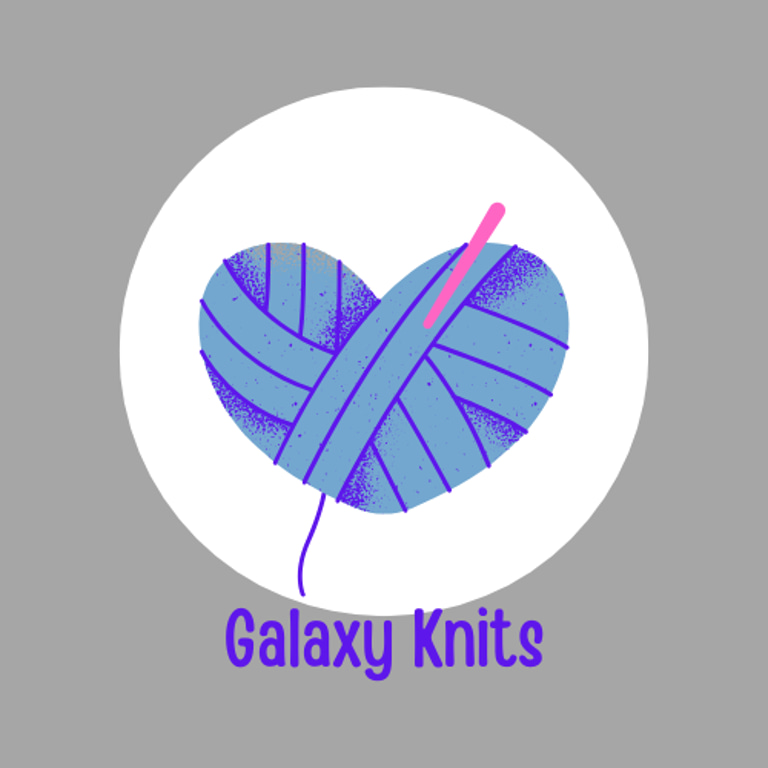Using Color in Knitting
Learn color theory basics and how to apply it to knitting
8/4/20253 min read
Choosing colors for a knitting project can feel like a daunting process if you don’t know where to start. The colors you choose will affect the readability of the stitch pattern, how you choose to wear the finished product, and the overall mood of the project.
Color Theory Basics
Primary colors are red, yellow, and blue, as most of us learned as kids, and secondary colors are created by mixing these. Red + yellow = orange, yellow + blue = green, and blue + red = purple. Secondary colors can then be mixed to create tertiary colors, named by hyphenating the colors that were mixed. Theoretically, we can mix these colors to create infinitely more hues, but beyond tertiary colors can be difficult to distinguish.
These pure hues are what you see on the color wheel, and in that state, they are considered fully saturated. The same hues can be dulled to be less saturated. A pure hue can be mixed with white to create a tint, gray to create a tone, or black to create a shade. All of these reduce the saturation without changing the hue, or dominant wavelength.
The value of a color describes the lightness or darkness, compared to a tonal scale from white to black. Value is of particular importance in knitting colorwork because you generally want to have a significant contrast between the colors you’re using so that any patterns you create will stand out. A quick way to test the value of the yarns you want is to take a grayscale picture of the yarns together. While this won’t be the only thing to consider when choosing colors, it will show you how much contrast there is, and therefore, if a pattern will be easily distinguished between them.
Color Palettes
Color relationships are described by their harmony and contrast. Colors close to each other on the color wheel are considered harmonious, while colors on opposite sides of the wheel have the most contrast. Here are some basic color relationships in order of increasing harmony and decreasing contrast:
Complementary: Two hue families that lie opposite each other on the color wheel, can be a primary + a secondary color, or two tertiary colors.
Triad: Three hue families equidistant from each other on the color wheel.
Split Complementary: One hue plus two hue families on either side of its complementary color, the split colors are analogous.
Square Tetrad: Four equidistant hue families on the color wheel.
Analogous: Colors that are near each other on the color wheel, they share one or two primary colors.
Monochromatic: Colors from the same hue family but with different levels of saturation.
Color Inspiration
Many people choose color palettes inspired by images, landscapes, animals, flowers, nature, anything you can think of! If there are particular colorful objects that inspire you, use them! When choosing inspiration, think about what colors are dominant, which colors draw your eye to them, and which colors are necessary to make the others pop. Some free online tools can help you come up with color palettes to inspire you: Coolors, Adobe Color, and Pinterest all can provide excellent color inspiration for your next project.
Choosing Yarn Colors
When choosing colors of yarn, you will need to consider what type of project you are making. Variegated hand-dyed yarns are beautiful, but you probably don’t want to use them with complicated stitch patterns. Using simple designs that show off all those colors melding together is going to look best. If you’re looking to do stranded colorwork, solid or tonal colors are going to work well, so that it’s easy to see the pattern you’re creating. Check the value of all the colors you plan to use and make sure they are separated into light and dark shades so there is always enough contrast between the background color and the pattern color. Solids and tonal yarns are also going to do well with texture and patterns that require good stitch definition, like cables and lace. Gradient yarns are a great way to include many colors while maintaining stitch definition. If you want a gradient effect without using gradient yarn, you can achieve this with marling. When in doubt, make a swatch to see how your colors work together in the stitch pattern you chose.
I hope this post has inspired you to be more thoughtful about choosing your color palette for your project. Use the form below to show me your next color palette, I can’t wait to see what you make! Happy stitching!


